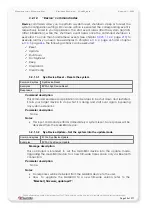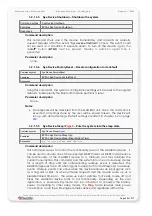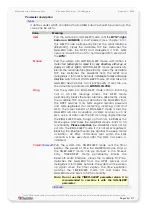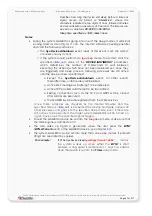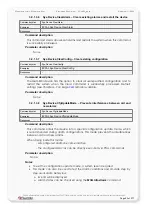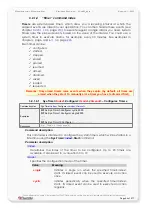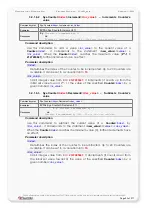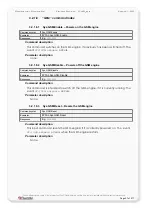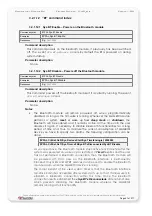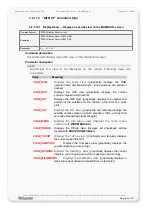
C
ONFIGURATION
C
OMMAND
S
ET
- F
IRMWARE
R
EVISION
2.4.0_
BETA
-
V
ERSION
1.0.0
3.2.1.5
“Trigger” command index
Triggers are user-based Triggers, which allow you to set, save and load their states when
the Trigger state (see chapter
, page
) is called in your application. You
can then handle this Trigger state as an option to enable or disable the execution of
various alarms. See examples in chapter
Each Trigger can be:
Activated/deactivated,
Read,
Saved,
Loaded.
3.2.1.5.1
Sys.Trigger<
index
>.Set=<
state_type
> – Activates/deactivates system
Triggers
Command syntax
Examples
$PFAL,Sys.Trigger
0.Set
=high
Responses
Command description
To activate and deactivate system triggers use this command.
Default setting of
each
Trigger
is low (inactive)
Parameter description
<index>
Determines the index of the trigger to be altered. Up to 20 Triggers are available.
It can be set to a value from
0
to
19
.
<state_type>
Determines the trigger state to be set. Following states can be set:
Value
Meaning
High
Sets
Trigger
to high level (active)
Low
Sets
Trigger
to low level (inactive)
Notes
•
Triggers do not generate events, when they alter their state.
3.2.1.5.2
Sys.Trigger<
index
>– Reads triggers state
Command syntax
Examples
$PFAL,Sys.Trigger
0
Responses
E.g. : $state of trigger 0: low
Command description
To read the state of a system trigger use this command.
Parameter description
<index>
Determines the index of the trigger to be read. Up to 20 Triggers are available. It
can be set to a value from
0
to
19
.
This confidential document is a property of FALCOM and may not be copied or circulated without previous permission.
Page 50 of 271



